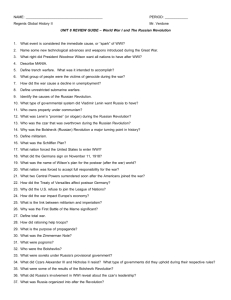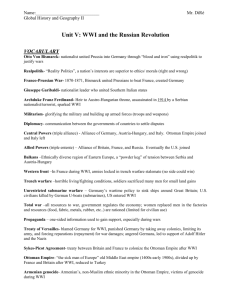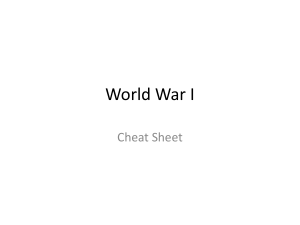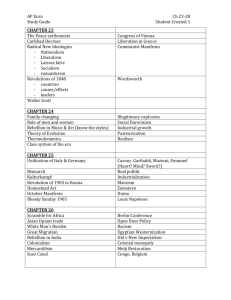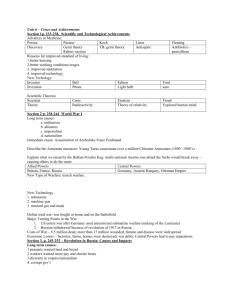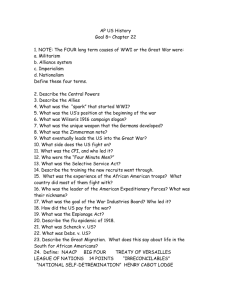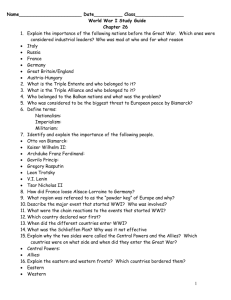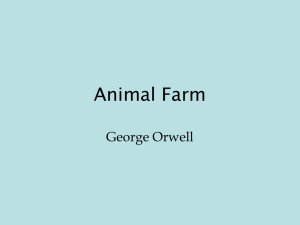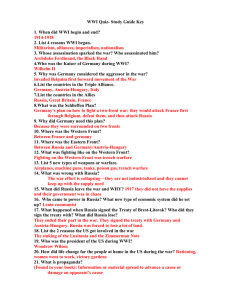Chapter 14-Section 1
advertisement
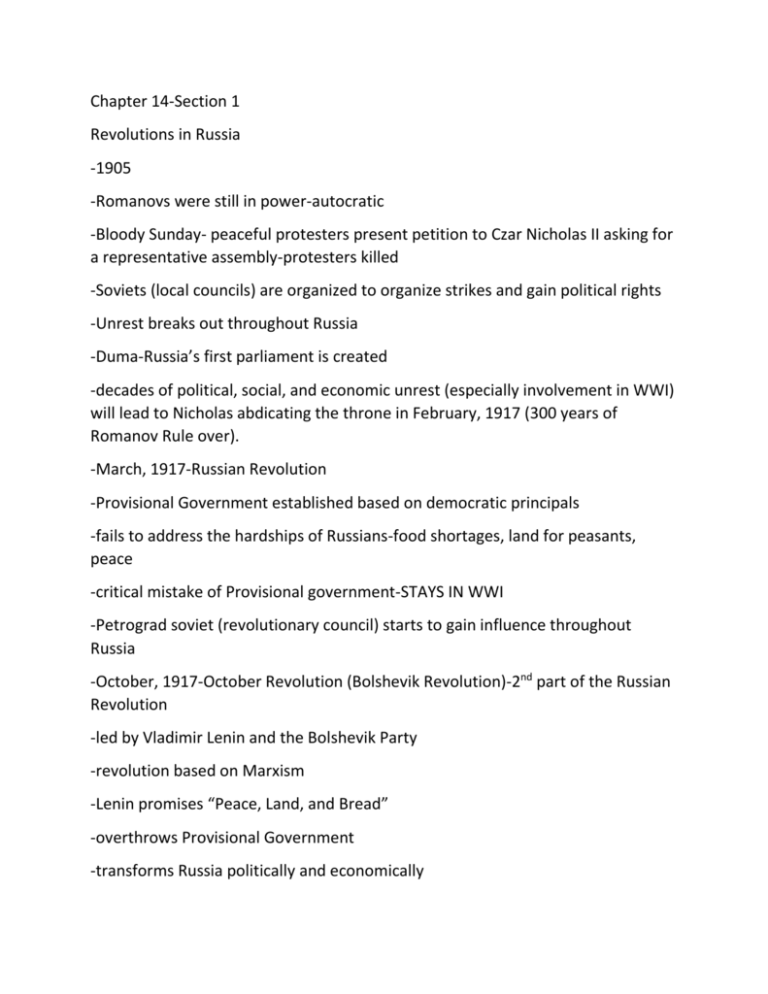
Chapter 14-Section 1 Revolutions in Russia -1905 -Romanovs were still in power-autocratic -Bloody Sunday- peaceful protesters present petition to Czar Nicholas II asking for a representative assembly-protesters killed -Soviets (local councils) are organized to organize strikes and gain political rights -Unrest breaks out throughout Russia -Duma-Russia’s first parliament is created -decades of political, social, and economic unrest (especially involvement in WWI) will lead to Nicholas abdicating the throne in February, 1917 (300 years of Romanov Rule over). -March, 1917-Russian Revolution -Provisional Government established based on democratic principals -fails to address the hardships of Russians-food shortages, land for peasants, peace -critical mistake of Provisional government-STAYS IN WWI -Petrograd soviet (revolutionary council) starts to gain influence throughout Russia -October, 1917-October Revolution (Bolshevik Revolution)-2nd part of the Russian Revolution -led by Vladimir Lenin and the Bolshevik Party -revolution based on Marxism -Lenin promises “Peace, Land, and Bread” -overthrows Provisional Government -transforms Russia politically and economically -Bolsheviks renamed Communists -Russia renamed the Union of Soviet Socialist Republics -Lenin gets Russia out of WWI, begins land reforms -more civil unrest -War Communism-all businesses under the control of the gov’t; the gov’t makes all planning and production decisions, food rationing, private ownership of business prohibited -when civil strife ended, war communism replaced by New Economic Policy -NEP allows elements of capitalism-has limited success -Lenin died in 1922 Joseph Stalin-Man of Steel Totalitarian Dictator (total control) Replaced NEP with 5 year plan-build a industrialized state (steel production, electrical, etc.). -transform from agrarian economy to a modern, industrialized nation -collectivization-gov’t takes control of land (collective farms), (angers peasantsespecially Kulaks) -goal is to improve agricultural production -collectives fail-resistance and man-made famine-millions dead -Great Purge-Stalin has millions executed -terror, fear, and censorship were hallmarks of his rule
